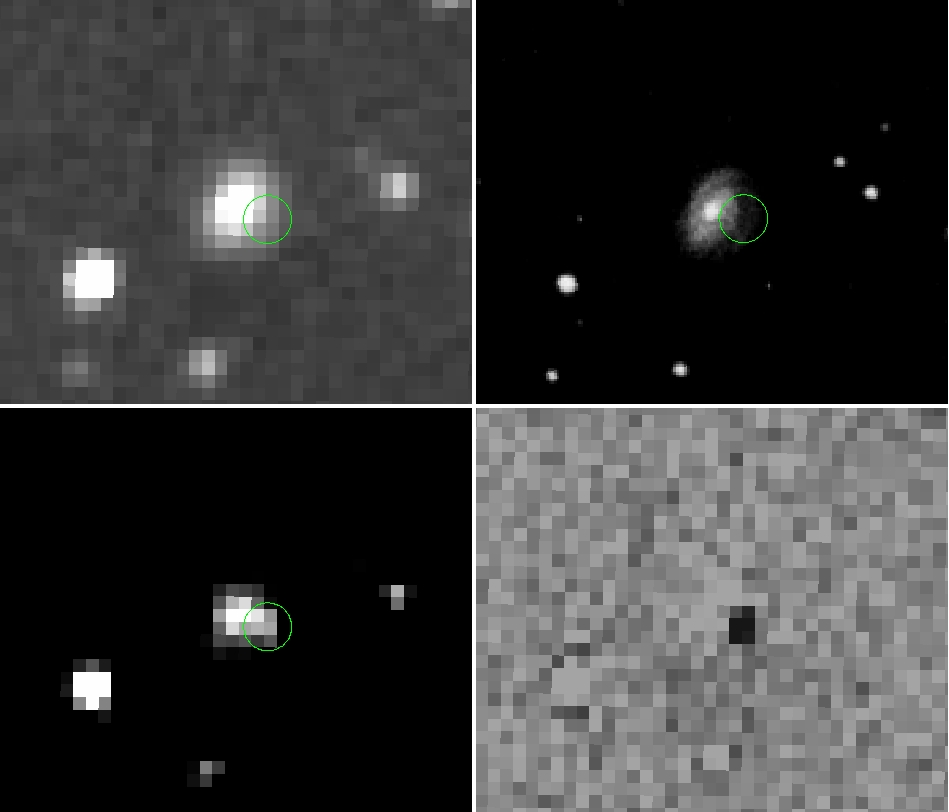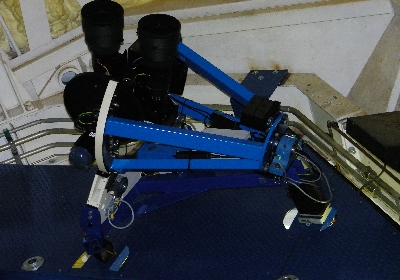2013 July 17 
How ASAS-SN Discovers Supernovae: Case of
Supernova ASASSN-13bb
This APOW illustrates how we look for and (now and then) discoverer
new supernovae and other transient objects (several per night). The
top left panel shows part of a ASAS-SN "reference image," created from
co-adding many images of the same field from previous visits with our
telescope. Because we have large pixels (7.5 arcsec/pixel), we also
use higher angular resolution archival images to see what our field
looks like: top right shows the DSS image (digitized photographic
plates) on the same angular scale. On lower left is one of the 90-sec
V-band images on 07/04 used to detect a supernova candidate we called
ASASSN-13bb. In order to better identify new sources we use a method
called "image subtraction" to create a difference image (lower right),
which clearly shows a new source. Circle with the 15" radius has the
same position. This was clear enough detection that based on ASAS-SN
data alone we 
